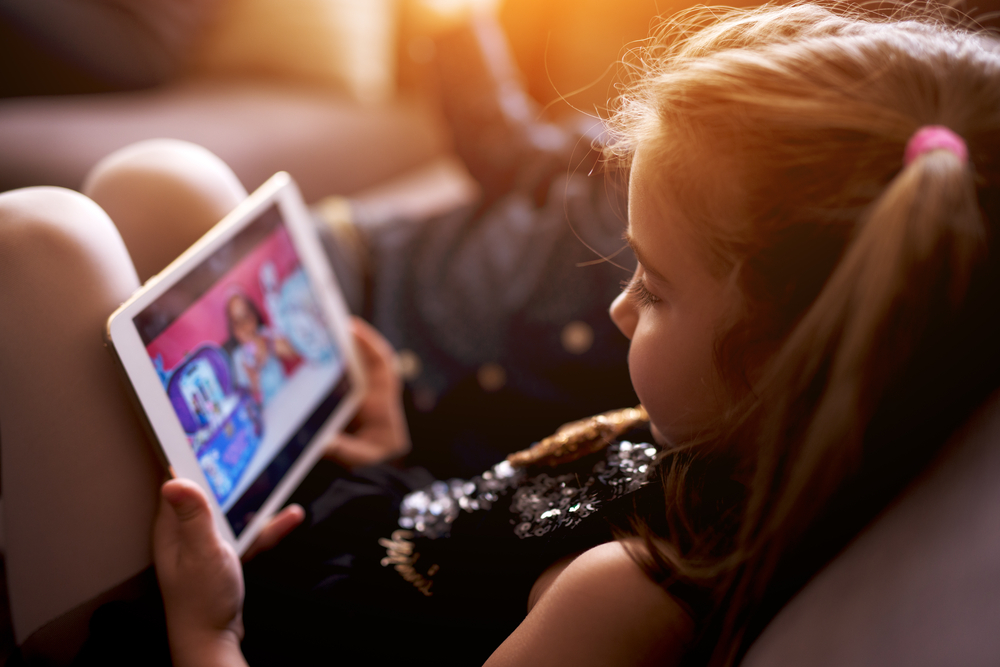
17 Feb Setting Limits on YouTube
Your child has been preoccupied with their iPad for the last hour. Out of instinct or curiosity, you ask them, “What are you watching?” and of course the answer is… “YouTube.” But what could they possibly be watching? How long is too long for them to be inundated with screens? And, where do you begin when it comes to setting limits on YouTube? These are the common questions that I hear from parents when it comes to this topic.
We live in a technologically savvy era, which means our children are exposed to all things digital. Toddlers are able to make requests of Alexa, can navigate smartphones and smart television to access their favorite YouTube videos (ahem…Peppa Pig, anyone?), and I am certain this is only the beginning. Technology can be an amazing tool for youth and adults alike. We can utilize it to stay connected to one another in our busy lives, to learn, grow, and for entertainment. But like all things, it can quickly become dangerous if appropriate limits are not set.
YouTube: The Good
YouTube can be a great tool when utilized in the right way. If you have ever visited the website, or app, then you are aware that you can find a “how-to” video for just about anything. Want to learn how to make a full 3-course meal? YouTube. Does your child have an interest in Pokémon or the latest toy? YouTube has content for that. In many ways, this social media site has evolved into a catalog of information at our fingertips. It also provides the ability to interact with others. For many children, YouTube can help them feel more connected to peers.
YouTube: The Bad
Many parents express concerns about exposure to inappropriate content (sexually explicit content, fighting, etc.), communication with strangers, and issues related to screen time/distractibility with YouTube. These concerns are valid, and really should be taken into account as you think about setting limits for your family. There have been news reports about children’s characters engaging in sexual activity and violence. Rightfully, this is a source of worry for many parents. YouTube has responded to this by implementing parental controls and creating “YouTube Kids,” which is meant to filter content. For children who struggle with executive functioning and/or impulse control, YouTube use (and disconnecting from it) can become a daily struggle. Tantrums, whining, and all-out refusal can lead to frustration for parents and kids alike. Setting age-appropriate limits on screen time and YouTube usage can help keep your child safe and ensure your peace of mind.
How Can I Limit YouTube?
It is important that you know what your child is watching on YouTube. This may look like viewing videos with your child or having screen usage occur in a shared community space where you can periodically check-in with your child. In addition to setting limits on when it is okay to watch YouTube, it is equally important to set limits on how much time your child is spending doing this task. Being clear about your expectations and implementing them as a family can help you model healthy screen use for your child. For example, you may decide that dinner time is a screen-free time, and therefore screens go to a predetermined space for that time. Lastly, explore options for parental controls. Many devices have options to set limits on use, amount of time, and access to content. Do your research to find out the best options for you and your family.
As children grow, they change and so does technology. As a parent, it is important that you can exercise flexibility to make new rules or modify old ones. You can find the support that you need from one of our trained and licensed child and family therapists. We can help you to keep that guiding principle of balance in mind as you readjust your family’s rules.
[1] NSFS has these categories: ADHD, Anxiety, Divorce, Executive Functioning, Family, Parenting, PRESS, Teen Therapy

Amber is a licensed clinical social worker who earned her Master of Social Work degree from The University of Illinois at Urbana-Champaign. She also holds a Bachelor’s of Arts degree in Applied Psychology from the University of Illinois at Chicago. Amber has six years of experience working with children, teens, young adults and their families in a variety of settings, including residential, juvenile probation and outpatient therapy.



Sorry, the comment form is closed at this time.